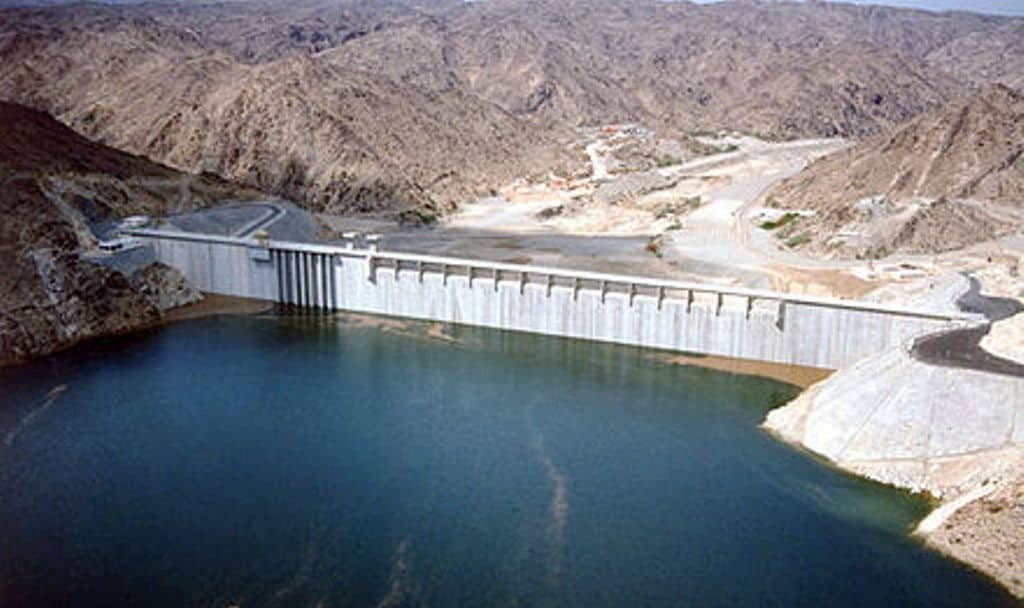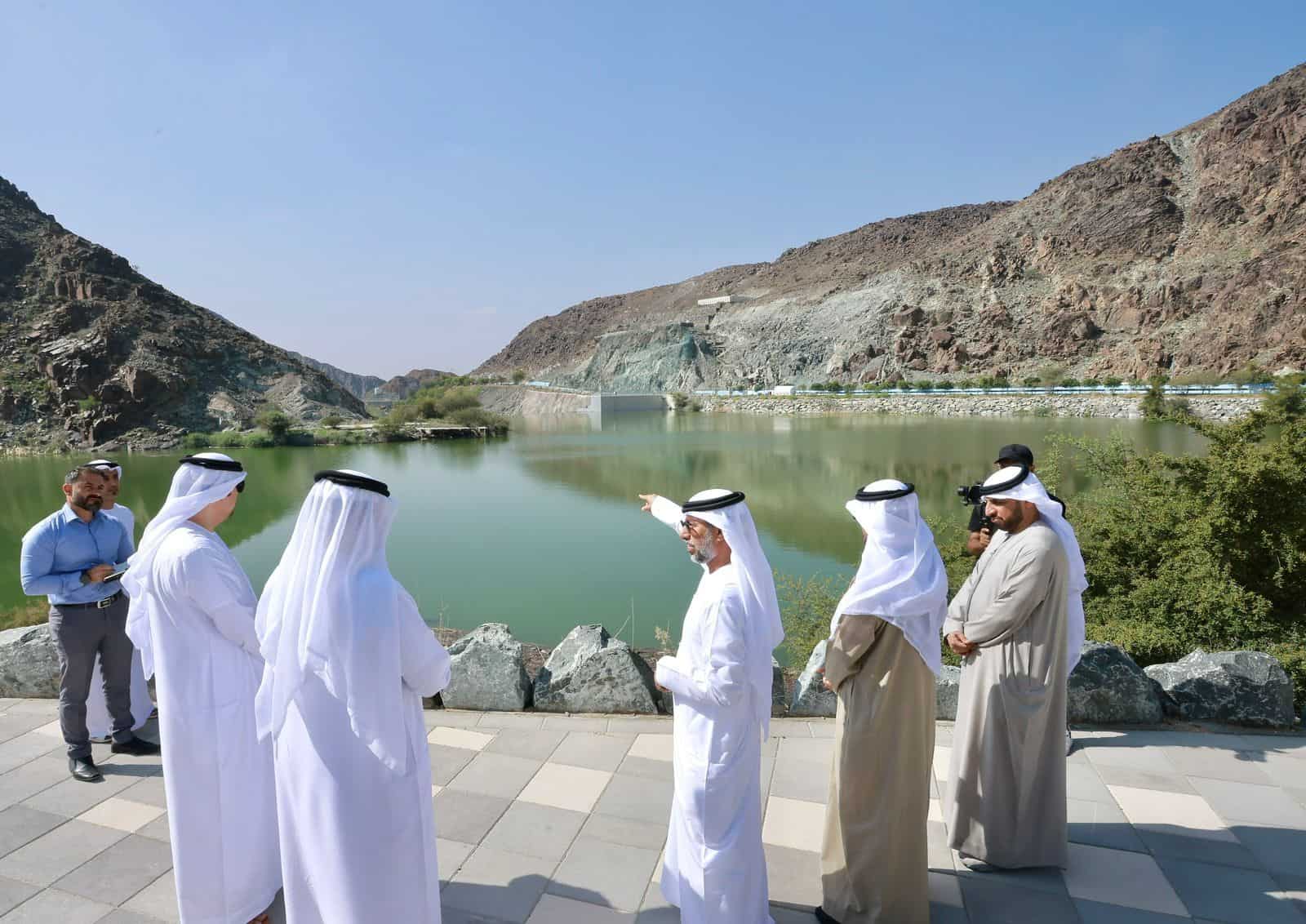RIYADH, SAUDI ARABIA — Due to their deserts, the Arab Gulf countries are among the poorest in terms of water resources, forcing them to use all available resources to combat the problem and keep water flowing to their citizens and agricultural lands, especially in light of their strategic plans to achieve food sufficiency and reduce reliance on imports.
Dams were one of the most essential solutions used by most Gulf countries to deal with the water crisis. So, they worked for many years to build them, and in recent years they have begun to develop plans for their expansion.
Saudi Arabia
In 2021, Saudi Arabia announced a study to build a thousand new dams to join the country’s 564 dam system.
According to a report issued by the Saudi Ministry of Environment, Water, and Agriculture, the kingdom built 11 dams in various parts of the country in 2019, and a study is currently underway to establish a thousand dams to be added to the Ministry’s system.
The report revealed that the Ministry established a new department called “Dams Operation and Maintenance Department,” to which all tasks and responsibilities related to dam operation and maintenance and their contracts were transferred.
The Ministry’s report, issued in 2021, confirmed that the hydrological network’s devices were also used to collect water monitoring data, issue a bulletin with daily rainfall rates, and install 31 additional rainwater measurement stations.
The kingdom’s dams are spread across the country; it owns 86 dams in the Asir region, 72 dams in Riyadh, 40 dams in Makkah, and 34 dams in Al-Baha.
It also owns 27 dams in the Hail region, 26 in the Madinah region, 18 in the Najran region, 11 in the Qassim region, and 10 in the Jazan region.

The Ministry of Environment, Water, and Agriculture announced in April last year that it had launched the first of its kind investment initiative to offer water dam projects for investment and exploit the surrounding areas for development and recreational activities.
The Ministry announced that four water dam projects in the Asir region would be made available for private sector companies and institutions to invest in.
Saudi Arabia seeks to exploit all natural potentials to achieve water security and to ensure the provision of the necessary capabilities to support the country’s water resources within the framework and goals of “Vision 2030”.
According to official data, the storage capacity of dams in Saudi Arabia exceeds 2,6 billion cubic meters of water.
According to the Global Water Development Report issued by the United Nations in March 2022, Saudi Arabia aims to adopt the dams project for various purposes, such as feeding water-bearing layers and irrigation operations, reducing floods, and filling part of the urban use need.
UAE
The UAE follows the Saudi model, as it owns 104 dams throughout the country with a total storage capacity of 80 million cubic meters.
In 1982, there were only four dams with a total storage capacity of 20 million cubic meters.
According to a 2022 Ministry of Energy and Industry report, the dams collected 36,816,255 cubic meters of rainwater at the start of the year.
This amount is considered the largest since 1982 when the Ministry of Environment began keeping track of the amount of rain in the country.
Dam tasks vary in the UAE; for example, the “Wadi Ham” dam, located in the country’s east, is among the most powerful. This dam benefits from the surface water of Wadi Ham by using it to serve the aquifer, and it can store approximately 211 square kilometers of rainwater.
The “Wadi Al-Basira” dam, which works to reserve water from the valleys behind the dam, is one of the major dams in the UAE, with a capacity of 116 square kilometers.
In 2020, the late President of the State, Sheikh Khalifa bin Zayed Al Nahyan, approved a package of dam projects, water canals, and urgent protection works in several regions of the country through the Committee of Initiatives.
The new package included the construction of a dam with a height of 22 meters, a width of 257 meters, and a capacity of approximately one million cubic meters in “Wadi Naqab” in the Emirate of Ras Al Khaimah. The dam will reduce water flow to residential neighborhoods while increasing groundwater stock in agricultural areas.
Oman
Oman’s Ministry of Agriculture confirmed on January 21 that it is currently constructing two dams, one on the “Wadi Adunib” in the Dhofar Governorate and the second on the course of a valley in Salalah.
“The first dam has a storage capacity of more than 83 million cubic meters of water, as it is the second largest dam in the country after Wadi Dayqah Dam in Muscat Governorate,” the Omani ministry said in a statement.
“The other dam is located on the course of Wadi Anaar in the Raysut region, with a storage capacity of 16 million cubic meters of water, as well as the construction of side protection for the port of Salalah,” she added.
The ministry explained that the two dams are part of a flood-protection system, including the construction of five protection dams in Salalah.
The remaining three dams will be built soon to provide maximum protection.
According to the same statement, Ali bin Bakhit Beit Saeed, the director of the Water Resources Department at the General Directorate of Agricultural, Fisheries, and Water Resources in Dhofar Governorate, stated that the completion rate of the “Adouneb” dam project was 22 percent, at a total cost of $62.3 million.
Saeed anticipated the dam would be completed in the second half of 2024. According to data from the Ministry of Agricultural Wealth, they had 174 dams by 2022, including 56 dams for groundwater recharge, three dams for flood protection, and 115 dams for surface storage.

